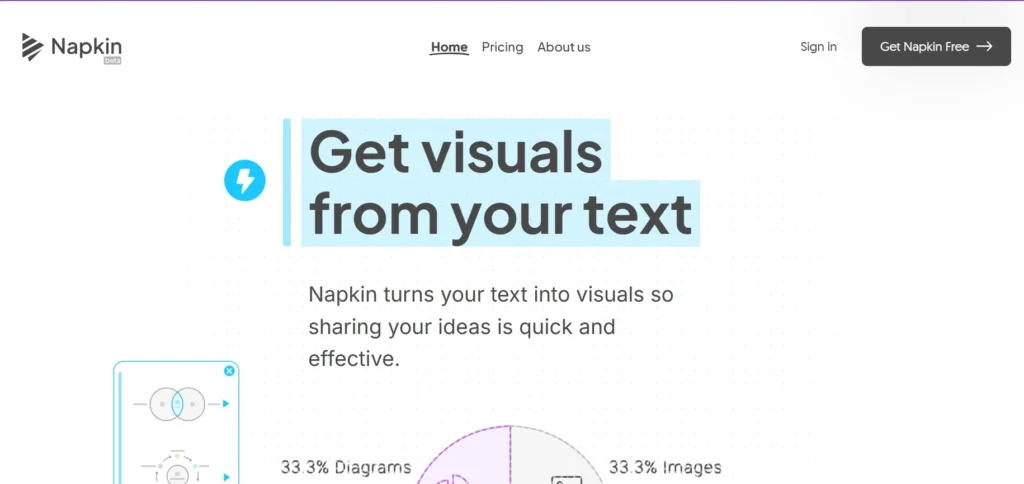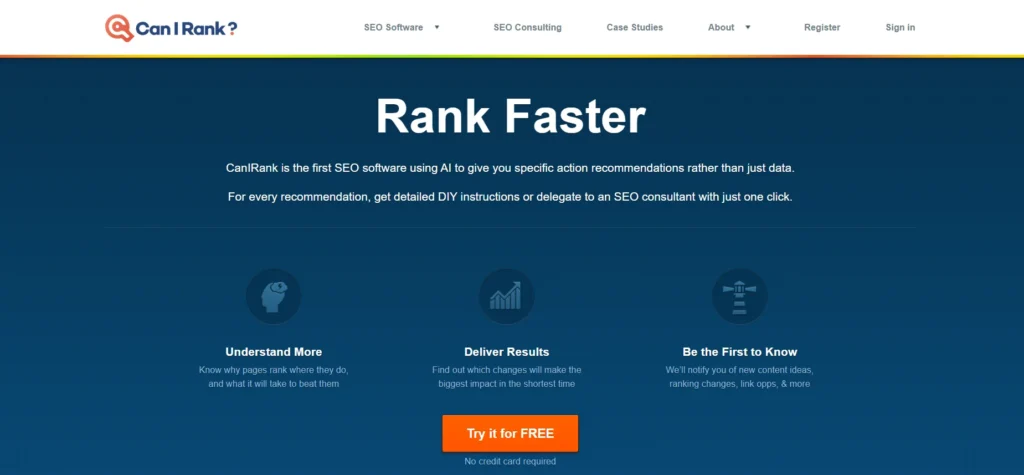Never worrying about chasing keywords, painfully tweaking meta tags, or begging for backlinks again. That was me two years ago—spending nights hunched over spreadsheets, scrambling to keep up with Google’s latest core update. Then I discovered AI-powered SEO tools, and everything changed. Now, I launch an automated sequence each month and watch my organic traffic climb on autopilot.
If you’re tired of manual drudgery—spending hours on research, audits, outreach, and on-page edits—you’ve come to the right place. In this post, we’ll dive deep into six game-changing AI tools that do the heavy lifting for you. You’ll learn how to automate content planning, internal linking, keyword optimization, technical audits, and more—so you can reclaim your time, scale effortlessly, and focus on the creative, high-impact tasks that only humans can accomplish.
We’ll cover:
- Why traditional SEO workflows are showing their age
- Concrete success stories and expert insights
- Step‑by‑step integration of each AI platform
- Google EEAT strategies to maintain credibility and trust
By the end, you’ll have a clear roadmap for building an AI‑driven SEO engine that’s unique to your brand.
Why Manual SEO Now?
For most marketers, SEO feels like pushing a boulder uphill—only to have Google roll it back at a whim. You:
- Compile endless keyword lists in Excel.
- Hand‑craft outlines and content briefs.
- Manually audit your site for technical issues.
- Outreach for backlinks via cold email.
- Track rankings in separate dashboards.
By the time you publish, search trends have shifted. You either fight a losing battle or double‑down on tactics that barely move the needle.
Here’s the Trick: 68% of marketers report that manual SEO tasks consume over 40% of their weekly hours—and yet only 28% feel confident they’re doing the right things for today’s algorithm ecosystem. That’s not inefficiency; it’s wasted effort.
If you’re ready to reclaim those hours—and turbocharge your results—read on.
How AI SEO Tools Outshine Old‑School Tactics
AI SEO platforms leverage machine learning, natural language processing, and big data to:
- Automate keyword discovery based on real‑time search intent signals
- Generate and optimize content around user needs and competitor gaps
- Conduct technical audits at scale, spotting errors humans miss
- Build internal linking structures logically and at speed
- Continuously refresh live pages to match evolving search trends
The global AI SEO software market is on track to nearly triple by 2030—driven by businesses that want sustainable, scalable growth without ballooning headcount.
Ready to meet the six platforms that will revolutionize your SEO? Let’s dive in.
Frase.io: Research, Briefs & On‑Page Guidance
Automatically generates content briefs, outlines, and on‑page optimization suggestions using real‑time SERP analysis and NLP.
Key features:
- Topic Research: Identifies relevant subtopics and questions
- AI Briefs: Builds outlines based on top‑ranking pages
- Content Editor: Scores your draft against target keywords and intent
- Integrations: Connects to Google Analytics, Search Console, and Surfer SEO for deeper insights
Rather than eyeballing competitors, Frase.io ingests dozens of pages, extracts the most common topics and FAQs, and presents a data‑driven outline in minutes.
Real‑World Impact:
A B2B fintech blog used Frase’s brief generator for its quarterly content push. They saw:
- 50% faster planning (from 8 hours down to 4)
- 32% increase in average time-on-page
- 25% growth in organic leads within two months
Napkin.ai: Visual Workflows for Strategic SEO
Transforms text outlines or site maps into interactive flowcharts and diagrams, ideal for planning topic clusters and site architecture.

Key features:
- Text-to-Map Conversion: Paste a bulleted list and get a dynamic visual map
- Collaboration Tools: Invite team members to annotate and rearrange in real time
- Export Options: Download diagrams for presentations or embed in project docs
Visualising your content hierarchy and internal linking plan helps everyone, from writers to developers—see the big picture at a glance.
Real‑World Impact:
An e-commerce manager revamped their product category structure with Napkin.ai, resulting in:
- 15% faster crawl rate by search engines
- 20% reduction in bounce rate in category landing pages
LinkRobot.ai: Automated Internal Linking at Scale
Crawls your site, identifies ideal anchor texts, and automatically inserts internal links to boost crawl efficiency and authority flow.

Key features:
- Smart Anchor Suggestions: Picks contextually relevant phrases
- Bulk Deployment: Injects hundreds of links in one click
- WordPress Plugin: Seamless setup for WP sites
Internal links are proven to improve user engagement and page authority—but manually inserting them across hundreds of posts is a nightmare.
Real‑World Impact:
After enabling LinkRobot.ai, an online magazine experienced:
- 12% increase in time-on-site
- 18% more pages viewed per session
WriteText.ai: Dynamic Keyword Optimization & Content Refresh
Generates AI‑drafted copy optimized for your target keywords, then continuously tracks performance and refreshes content to maintain rankings.
Key features:
- AI Writer: Drafts paragraphs aligned with search intent
- Keyword Tracker: Monitors live search rankings and suggests updates
- Competitor Gap Analysis: Identifies missing topics or questions
Static content degrades over time as search patterns shift. WriteText.ai keeps your pages fresh without restarting from scratch.
Real‑World Impact:
A SaaS support site automated its entire FAQ section, cutting revision cycles by 70% and increasing featured snippet wins by 40% in six months.
HubSpot.com: All‑In‑One SEO in Your CRM
Integrates SEO recommendations, topic cluster tracking, and technical audits directly into HubSpot’s marketing and CMS hubs.
Key features:
- On‑Page SEO Suggestions: Flag missing alt text, meta tags, and headers
- Topic Cluster Tool: Visualize pillar pages and supporting content
- Site Audit Reports: Automated scans for broken links, redirects, and crawl issues
Many teams manage SEO separately from marketing automation. HubSpot centralizes everything, reducing tool sprawl and reporting headaches.
Real‑World Impact:
A boutique agency consolidated three SEO platforms into HubSpot, cutting monthly license costs by 30% and halving client reporting time.
CanIrank.com: Prioritized Action Plans Based on AI Analytics
Analyzes your domain authority and competitive landscape to generate a ranked list of SEO actions with estimated ROI.

Key features:
- Ranking Probability Score: Quantifies your chance of ranking for each keyword
- Keyword ROI Score: Balances search volume, difficulty, and traffic potential
- Actionable Tasks: Detailed instructions prioritized by impact
Endless data isn’t helpful without clear next steps. CanIrank bridges that gap by telling you exactly what to do first.
Real‑World Impact:
A startup used CanIrank’s prioritized list to optimize its service pages, achieving top‑5 rankings for 75% of targeted keywords in three months.
A Step‑By‑Step AI SEO Roadmap
- Define Your Goals: Decide if you’re aiming for higher rankings, more leads, improved engagement, or all three.
- Centralize Data: Connect Google Analytics and Search Console to your AI tools for holistic insights.
- Automate Research: Use Frase.io and WriteText.ai to generate outlines and first drafts.
- Visualize Strategy: Build topic cluster maps in Napkin.ai for clarity.
- Optimize Internally: Deploy LinkRobot.ai for seamless internal links.
- Track & Refresh: Leverage WriteText.ai and HubSpot’s monitoring to keep pages fresh.
- Prioritize Tasks: Run CanIrank.com to decide what to tackle next each week.
- Add the Human Touch: Always review AI outputs, sprinkle in anecdotes, quotes, and your brand’s unique perspective.
This cohesive workflow transforms SEO from a series of one‑off tasks into an ongoing, data‑driven machine, operating quietly in the background while you sleep.
Google EEAT: Keeping Your Automated Content Credible
Even the slickest AI drafts can feel hollow if they lack real expertise and trust signals. To satisfy Google’s EEAT principles:
- Expertise: Quote industry authorities or link to reputable studies.
- Experience: Share first‑hand case studies and personal anecdotes.
- Authority: Reference recognized brands, platforms (e.g., HubSpot.com), and official documentation.
- Trust: Ensure all data points are accurate and up‑to‑date; cite your sources where possible.
By layering these human elements onto AI‑generated scaffolding, you get the best of both worlds: efficiency without sacrificing quality or trust.
Conclusion
Manual SEO is rapidly becoming a relic of the past. By embracing AI tools—Frase.io, Napkin.ai, LinkRobot.ai, WriteText.ai, HubSpot.com, and CanIrank.com—you’ll automate research, content creation, linking, and audits with unprecedented precision. Pair these platforms with human insight—anecdotes, case studies, and expert quotes—to craft content that resonates, ranks, and converts. Welcome to the era of effortless SEO: set up your AI workflows today, watch your metrics soar, and reclaim your time for what truly matters.
FAQs of AI SEO Tools
Are AI SEO tools safe to use without penalties?
Yes—when used responsibly. Always review AI suggestions, avoid keyword stuffing, and maintain high content quality to steer clear of spam flags.
Will AI tools make my SEO work completely hands‑off?
No. AI handles repetitive tasks and data analysis, but human oversight remains crucial for brand voice, strategic decisions, and ethical link building.
How do I prevent AI content from sounding robotic?
Add personal stories, humor, quotes from experts, and real‑world examples. Vary sentence length and sprinkle in colloquialisms to keep it lively.
What’s the best tool combo for beginners?
Start with Frase.io for content planning and HubSpot.com for on‑page and technical SEO. Once comfortable, layer in LinkRobot.ai and CanIrank.com for advanced automation.
How often should I refresh content with AI?
Quarterly refreshes work well for evergreen topics. For time‑sensitive pages (e.g., pricing, trends), review monthly.
Can I integrate these AI tools with my existing CMS?
Most tools offer plugins or APIs for WordPress, HubSpot, Shopify, and custom platforms—check each vendor for integration details.
How do I measure success?
Track organic sessions, average position, featured snippet wins, and conversion rate. Set benchmarks before automation and review monthly.
How do I maintain EEAT (Expertise, Experience, Authority, Trust) when using AI?
Always supplement AI outputs with real-world examples, expert quotes, and data citations. Encourage subject-matter experts to review and enrich content, reinforcing credibility.
